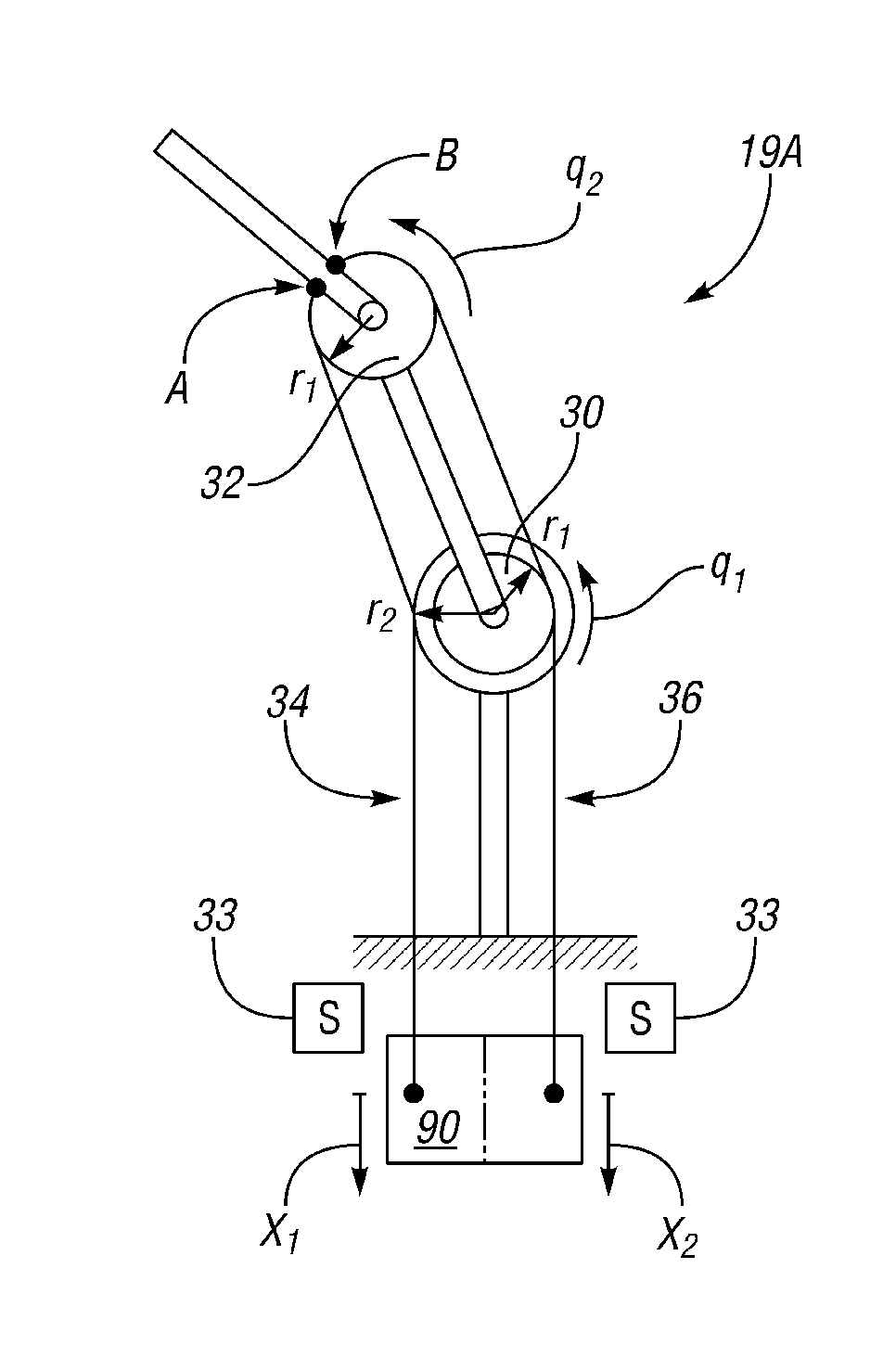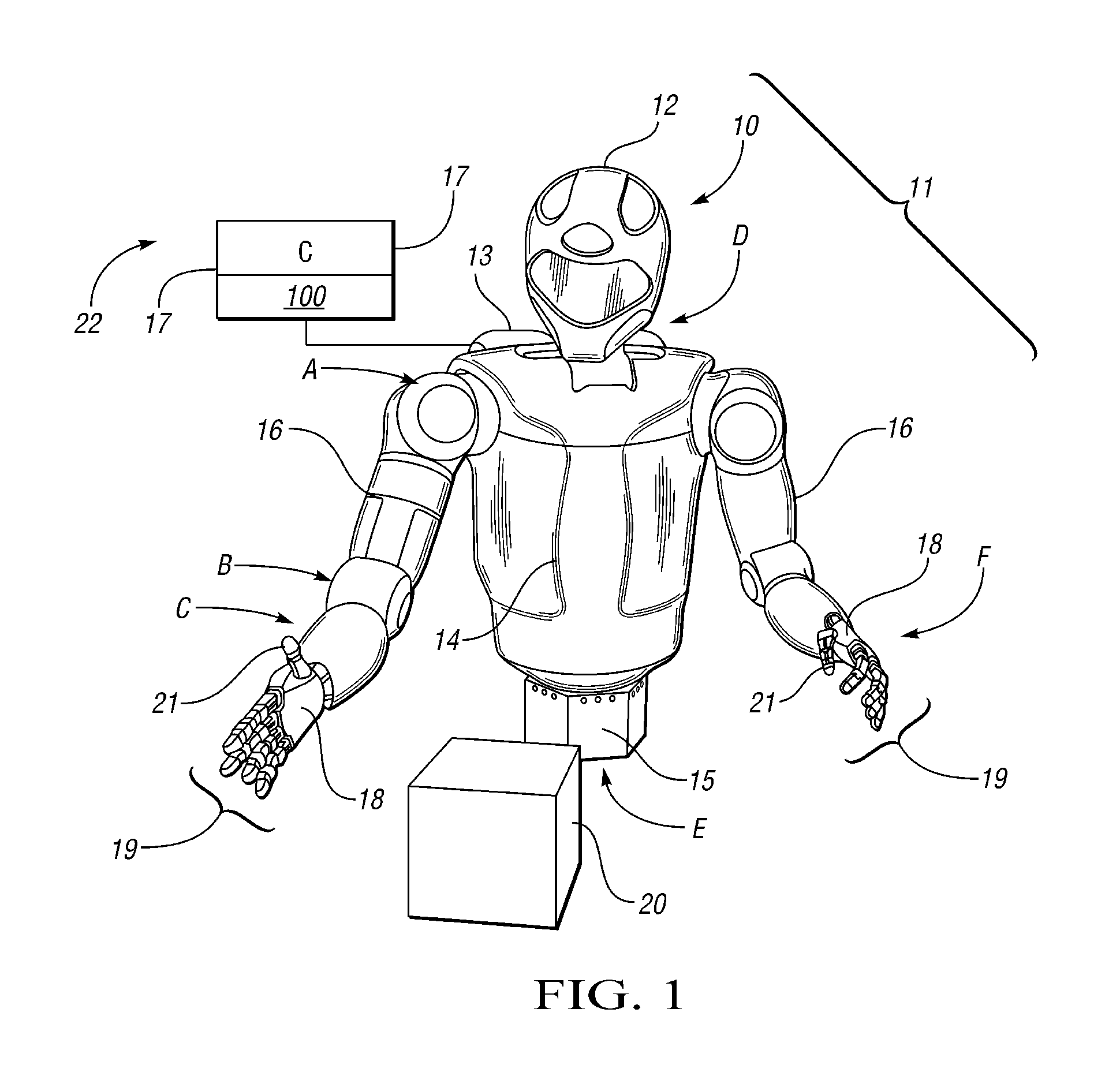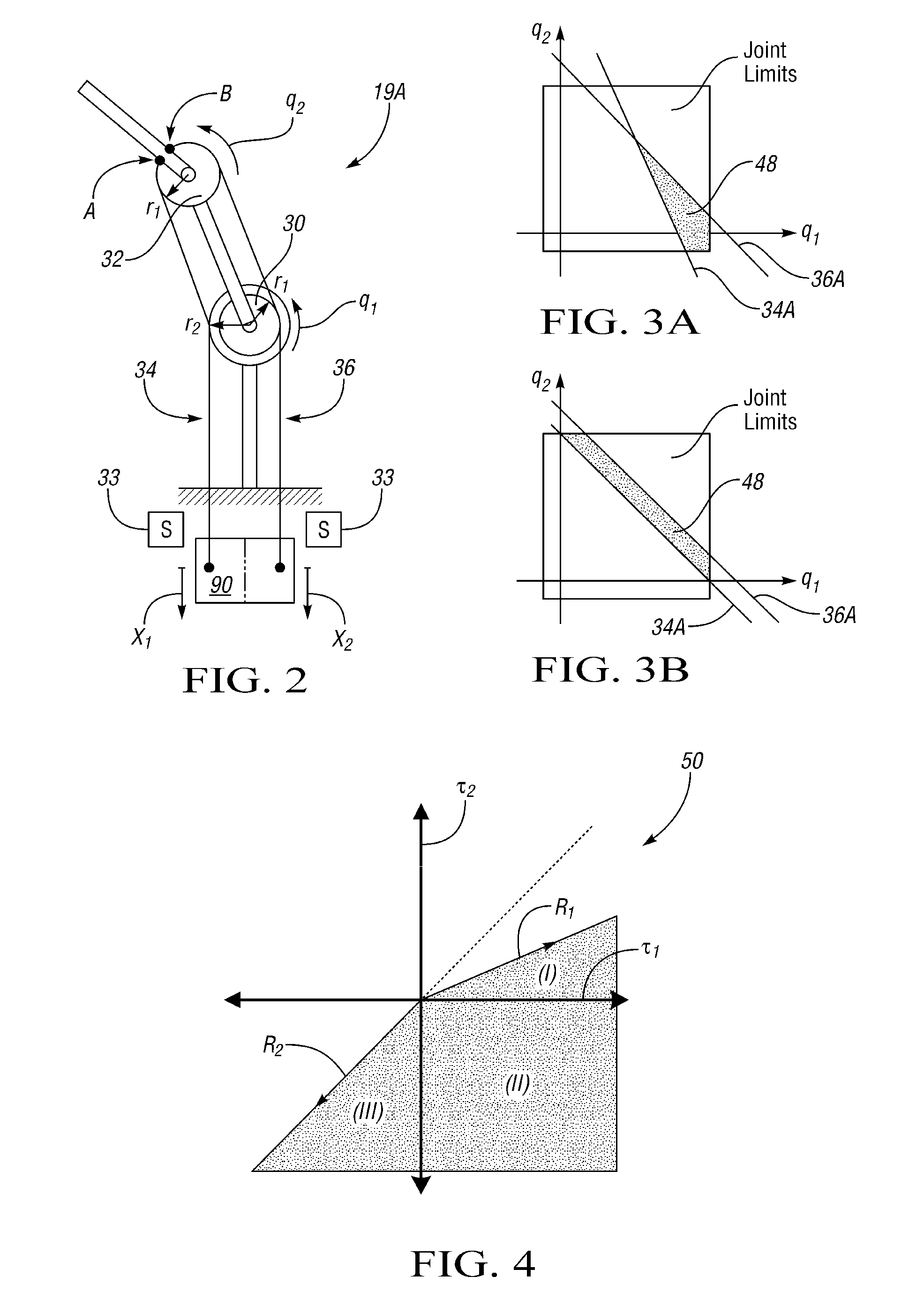Torque control of underactuated tendon-driven robotic fingers
a robotic finger and tendon technology, applied in the direction of programme control, coupling device connection, instruments, etc., can solve the problems of increasing the demand for space and maintenance requirements, affecting the posture of the robotic hand, and affecting the operation of the robotic hand. , to achieve the effect of reducing the number of actuators, and saving limited packaging spa
- Summary
- Abstract
- Description
- Claims
- Application Information
AI Technical Summary
Benefits of technology
Problems solved by technology
Method used
Image
Examples
Embodiment Construction
[0018]Referring to the drawings, wherein like reference numbers refer to the same or similar components throughout the several views, and beginning with FIG. 1, a robotic system 11 is shown having a robot 10, e.g., a dexterous humanoid-type robot as shown or any part thereof, that is controlled via a control system or controller (C) 22. The controller 22 is electrically connected to the robot 10, and is adapted with an algorithm 100 for controlling the various manipulators of the robot 10, including one or more tendon-driven fingers 19 as described in detail below with reference to FIGS. 2 and 3. Some of the fingers 19 are underactuated as described herein, and some are fully actuated, with the underactuated fingers assisting the fully actuated fingers in grasping an object 20. The present invention controls the underactuated fingers using tension sensors as set forth below, via force control, and in some embodiments using asymmetric joint radii. An unconstrained slack space that wo...
PUM
| Property | Measurement | Unit |
|---|---|---|
| degrees of freedom | aaaaa | aaaaa |
| degrees of freedom | aaaaa | aaaaa |
| tension | aaaaa | aaaaa |
Abstract
Description
Claims
Application Information
 Login to view more
Login to view more - R&D Engineer
- R&D Manager
- IP Professional
- Industry Leading Data Capabilities
- Powerful AI technology
- Patent DNA Extraction
Browse by: Latest US Patents, China's latest patents, Technical Efficacy Thesaurus, Application Domain, Technology Topic.
© 2024 PatSnap. All rights reserved.Legal|Privacy policy|Modern Slavery Act Transparency Statement|Sitemap



